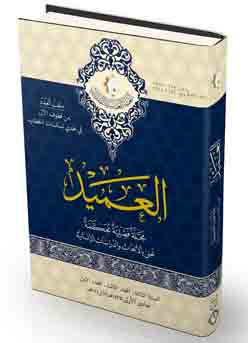Abstract
The primary objective of pragma-rhetorical devices is persuasion
that can be defined as being able to change ones’ thoughts and
feelings towards a particular subject. Imam Ali Bin Abi Tabil (P.B.U.H)
used these pragma-rhetorical devices in his speeches which are collected
in Peak of Eloquence (Nahj al-Balagha). The current study
aims at making pragma-rhetorical analysis of some of Imam Ali’s
speeches delivered under the topic of moral teachings. The results
show that Imam Ali highly used these pragma-rhetorical devices
with the aim of persuading the audience to adhere to these moral
teachings.
that can be defined as being able to change ones’ thoughts and
feelings towards a particular subject. Imam Ali Bin Abi Tabil (P.B.U.H)
used these pragma-rhetorical devices in his speeches which are collected
in Peak of Eloquence (Nahj al-Balagha). The current study
aims at making pragma-rhetorical analysis of some of Imam Ali’s
speeches delivered under the topic of moral teachings. The results
show that Imam Ali highly used these pragma-rhetorical devices
with the aim of persuading the audience to adhere to these moral
teachings.
Abstract
ان الاهداف الاساسية للأساليب البلاغية هو الاقناع والذي يمكن تعريفه بأنه
القدرة على تغيير الأفكار والمشاعر باتجاه موضوع معين. ولقد استعمل الامام علي
)عليه السلام( هذه الاساليب في خطبه التي جمعت في كتاب )نهج البلاغة(. تهدف
الدراسة الحالية إلى التحليل البراغماتي لبعض من خطب الإمام علي )عليه السلام(
في موضوع التهذيب الخلقي. وأظهرت النتائج ان الامام علي )عليه السلام( قد
استعمل هذه الاساليب البلاغية بشكل كبير بنية اقناع المستمعين بضرورة التقيد
بهذا التهذيب الخلقي.
القدرة على تغيير الأفكار والمشاعر باتجاه موضوع معين. ولقد استعمل الامام علي
)عليه السلام( هذه الاساليب في خطبه التي جمعت في كتاب )نهج البلاغة(. تهدف
الدراسة الحالية إلى التحليل البراغماتي لبعض من خطب الإمام علي )عليه السلام(
في موضوع التهذيب الخلقي. وأظهرت النتائج ان الامام علي )عليه السلام( قد
استعمل هذه الاساليب البلاغية بشكل كبير بنية اقناع المستمعين بضرورة التقيد
بهذا التهذيب الخلقي.
